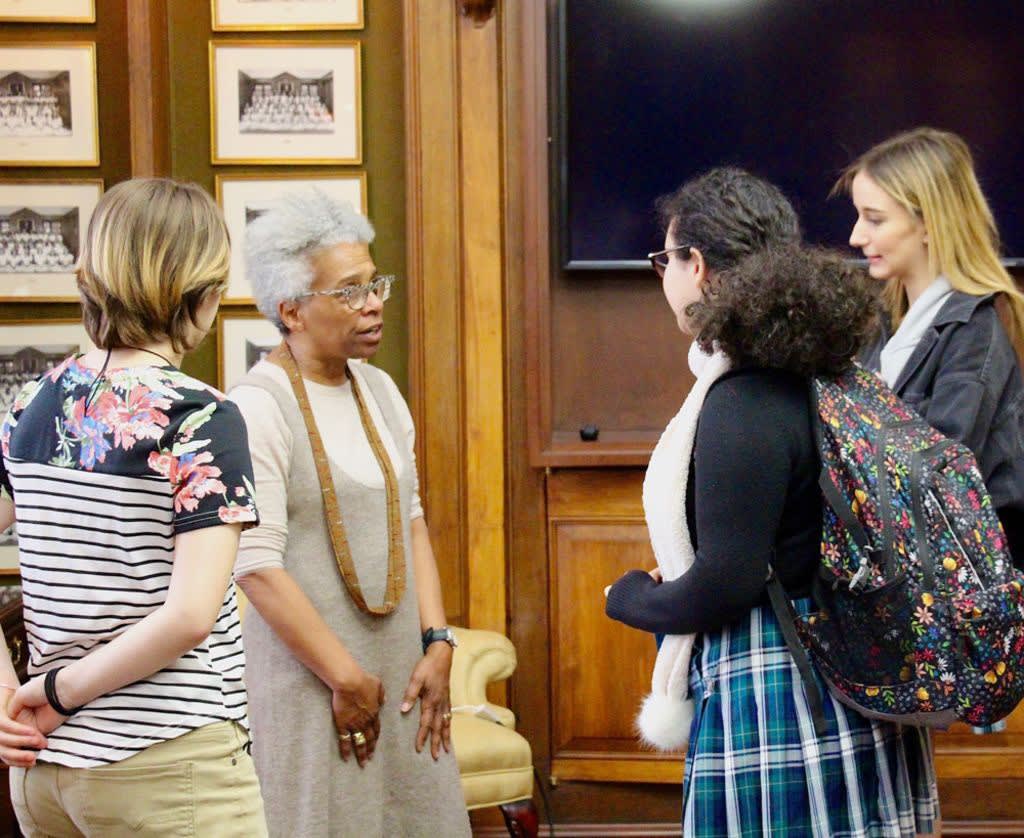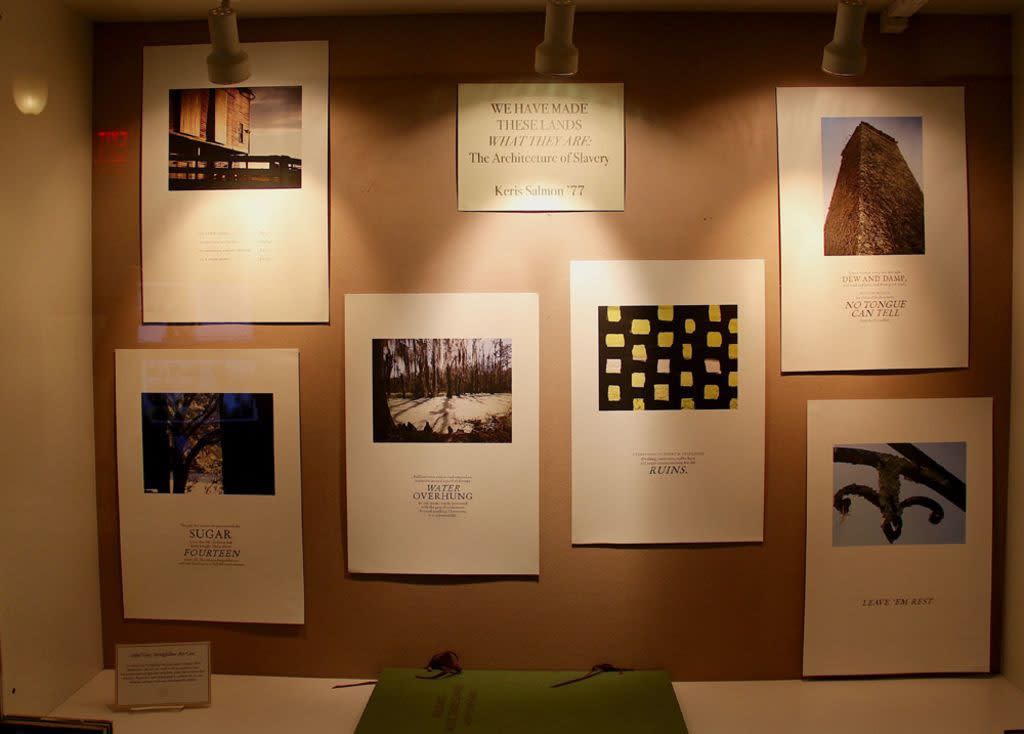Four years ago, while on a trip to rural Tennessee, alumna Keris Salmon ’77 experienced an epiphany of sorts. Touring Wessyngton, a tobacco plantation that once belonged to her husband’s ancestors, she was overcome with emotion. “I knew I had to create something from it,” she remarked during a recent visit to Chapin.

That “something” evolved into a thought-provoking exhibition titled, “We Have Made These Lands What They Are: The Architecture of Slavery.” Throughout her collection, Ms. Salmon juxtaposes intimate photographs from six plantations in the South with the arresting voices of slaves and slave-owners, culled from painstaking research of historical documents like slave auction records and diary entries.
The results are nothing short of extraordinary. “I always knew I had an artist inside me, but I didn’t know I could be one,” Ms. Salmon told her audience of Upper School students in Duane Neil and Marianne Brand’s Photography and Drawing classes who had gathered in the Berendsen Room to listen to her presentation. “The dormant artist in me woke up,” said Ms. Salmon, whose work was recently on display in the Ethel Grey Stringfellow Case in Chapin’s front hall.
After Chapin, Ms. Salmon attended Stanford University then received a master’s degree from the UC Berkeley Graduate School of Journalism in California. A successful career in broadcast journalism followed; she worked at major networks including ABC, NBC, the National Geographic Channel and PBS, collecting prestigious awards for her reporting.
It was her journalist’s eye, sharpened over nearly 25 years in the field, along with a fascination with visual storytelling, that helped Ms. Salmon, who is African American, explore the connections between her people’s past and present. Her overarching objective was to cast a light on “the enduring legacy of slavery,” she explained to the students.

Each piece in Ms. Salmon’s exhibit comprises two unique elements: a photograph that captures a distinctive detail she observed while visiting the plantations and a collection of words that poignantly encapsulate the slave experience. Presented together as digital prints on simple white paper – with the color image centered at the top and the stark text below – these works tell an unforgettable story.
In one piece entitled “Cargo,” Ms. Salmon pairs an image of a majestic heron, wings outstretched, adorned with a wanted notice for three runaway slaves, announcing: “They had on white negro-cloth jackets & breeches, & caps of the same; & carried with them their blankets and an axe.” The irony here, Ms. Salmon noted, is that this bird is about to soar, yet human slaves enjoyed no such freedom.
Another, called “Tampa,” features a close-up shot of a torn window screen, perhaps from a slave dwelling, followed by a list of slaves for sale – Aaron, Alexis, Philip, Sally and Tampa – with descriptions (“American Negress of the Field, 30”; “Creole Negro, 36, Ploughman”) and prices. “Ruins,” a third work, combines a graphically interesting, outward-facing image with hints of green grass visible through a pattern of squares, offering an obstructed view to the outside world. A slave’s words appear below: “Everything is burnt and destroyed. Dwelling, outhouses, stable, barn and negro houses, nothing but the Ruins.”

What the artist chose not to show – disturbing symbols of slavery like chains and whips, for example – was as remarkable as the photographs she decided to put forth. “Using beautiful imagery helps get viewers more invested and interested in what’s going on,” she explained. To achieve the desired textual look to accompany her photography, Ms. Salmon partnered with a letterpress specialist in Brooklyn, where she is based, to design fonts that replicated the original documents of the slave era.
Ms. Salmon, who developed lifelong friendships while at Chapin, relished the opportunity to share her work with the Upper School students, several of whom lingered after the presentation to ask her more questions. With its power and urgency, “We Have Made These Lands What They Are” is certainly an exhibition that resonated.


